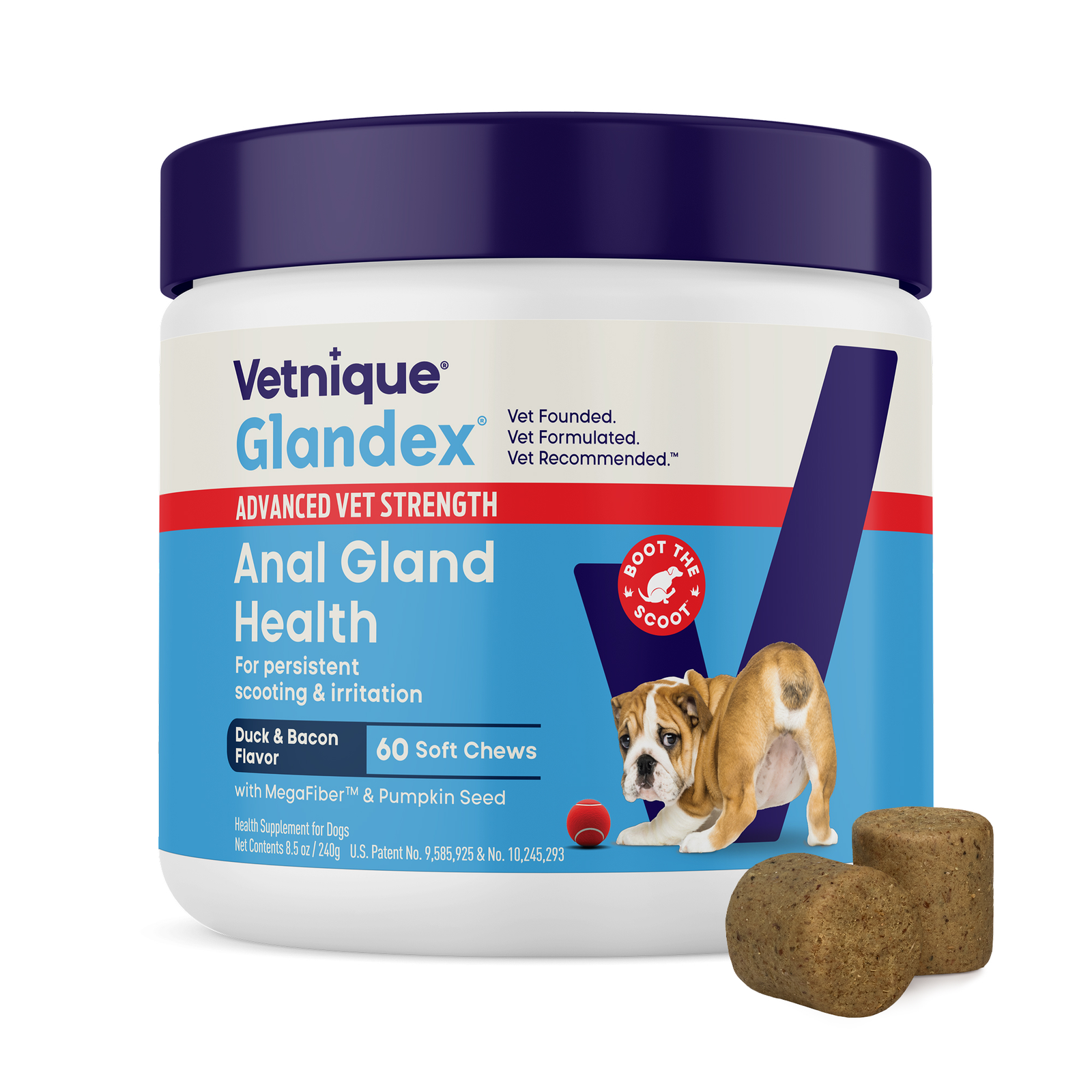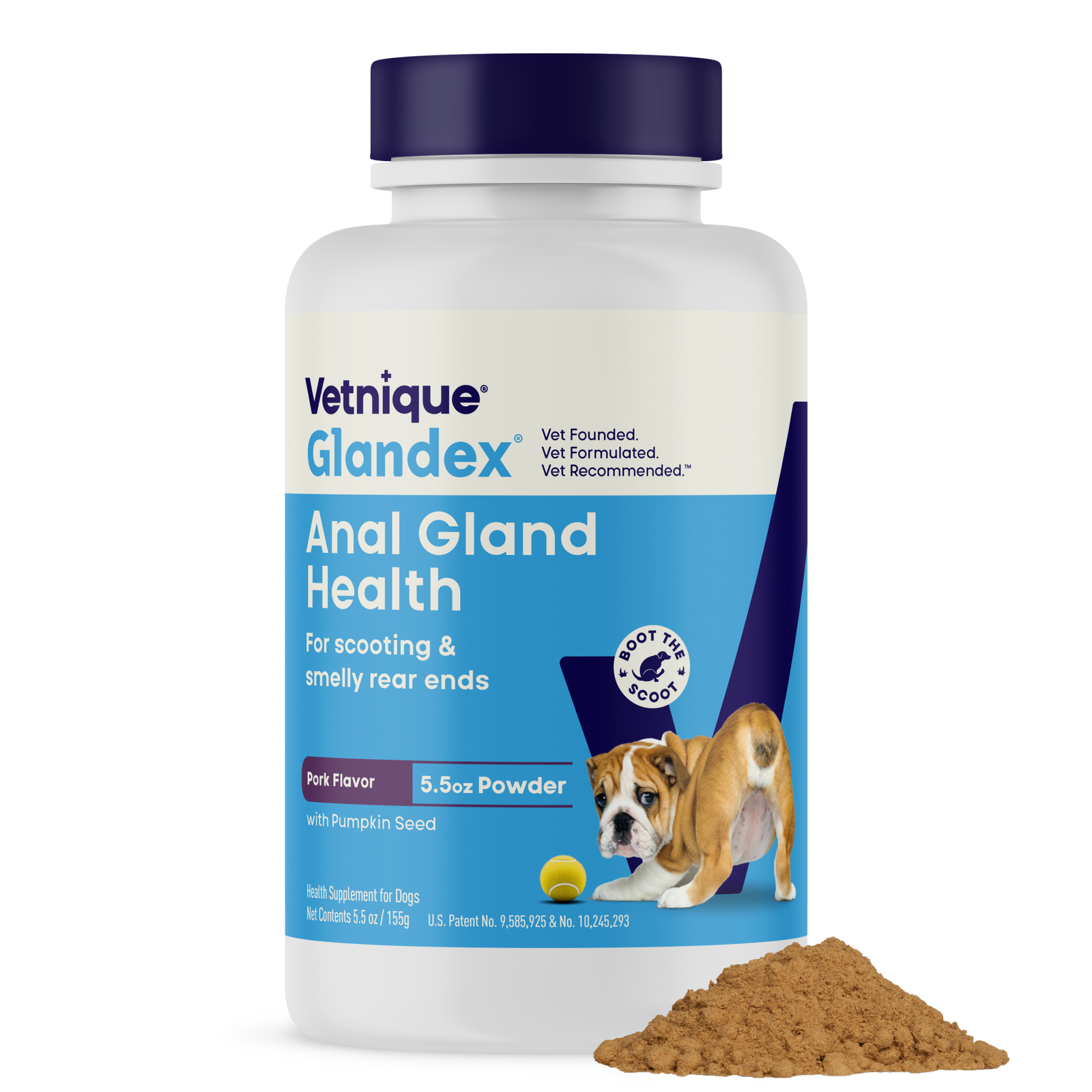Hot Spots in Dogs: What They Are and How to Treat Them
Vet Verified
WRITTEN BY DR. PATRICK MAHANEY

Hot spots on dogs can be a common–and bothersome–issue for many pet parents. These hot spots on dogs are also known as acute moist dermatitis and can cause discomfort and irritation for your furry friend.
As a veterinarian, I often encounter cases of hot spots and understand the concern they bring to pet parents. In this guide, we'll explain what hot spots are, what causes them, how they're diagnosed and treated, and share important prevention tips to help your dog recover from this uncomfortable skin condition.
What are hot spots?
Hot spots on dogs are localized areas of skin inflammation and irritation that can develop rapidly. They often appear as red, moist, and sometimes painful and unpleasant-smelling lesions on the skin. These spots can occur anywhere on your dog's body but are commonly found on the neck, head, hips, and legs. They are typically warm to the touch, hence the name "hot spots."
Hot spots can vary in size from small patches to larger areas of affected skin. The intense itching and discomfort associated with hot spots often cause dogs to lick, chew, or scratch at the affected area, further aggravating the condition and causing more discomfort.

Common areas dogs get hot spots
The most common areas dogs get hot spots include the neck, head, hips, and legs (some of the main areas that are accessible when a dog chews, licks, or scratches). These areas are prone to moisture buildup, which can contribute to the development of hot spots. Dogs with thick coats, or those that frequently swim or bathe, may be more susceptible to hot spots in these regions, as warmth and moisture get trapped between the skin surface in thick-coated dogs.
When left untreated, hot spots can spread and become more severe, potentially leading to secondary bacterial infections or further skin complications. Prompt identification and management of hot spots are essential to prevent worsening pain or discomfort for your pet.
What causes hot spots on dogs?
Hot spots on dogs can be a source of frustration and concern for pet parents, but understanding the underlying causes is key to effective management and prevention. Several factors can contribute to the development of hot spots on dogs, ranging from food and/or environmental allergies to environmental irritants and underlying health issues. By exploring these causes in detail, we can better equip ourselves to recognize and address hot spots in our canine companions.
allergies
Allergies are a significant cause of hot spots in dogs. Hot spots on dogs can result from food allergies, environmental allergies (such as pollen or dust mites), or contact allergies (like certain fabrics or cleaning products). When a dog's immune system overreacts to these allergens, it can lead to skin inflammation and hot spot formation.
Identifying and addressing underlying allergies is crucial in managing and preventing hot spots in dogs. Your veterinarian may recommend allergy testing or dietary changes to pinpoint and manage your dog's specific allergens.
environmental irritants
In addition to allergies, environmental irritations such as excessive humidity or heat can contribute to hot spot development. Moisture trapped in the fur, especially in warm climates or after swimming, creates an ideal environment for bacteria that normally live on the skin surface–or those that are found in the environment–to thrive, leading to hot spots.
Regular grooming and proper coat maintenance can help reduce moisture buildup and minimize the risk of hot spots in dogs, especially those prone to environmental sensitivities.
ear infections
Ear infections can also cause hot spots, especially in dogs with long, floppy ears. Moisture and bacteria buildup in the ears can spread to nearby skin, triggering hot spot formation. Dogs may attempt to manage the discomfort caused by skin infections by rubbing or scratching the ears, causing the area around the ears to become traumatized, inflamed, and infected.
Maintaining good ear hygiene, regular ear cleanings, and prompt treatment of any ear infections can help prevent hot spots associated with ear issues.
anal gland inflammation
Anal gland inflammation or impaction can cause dogs to lick or chew at their hindquarters excessively, leading to hot spots in that area. Addressing anal gland issues promptly can help prevent hot spot development.
Regular anal gland expression by a veterinarian or grooming professional can prevent buildup of anal gland fluid and discomfort, reducing the likelihood of hot spots in this area.
How are hot spots diagnosed?
Diagnosing hot spots on dogs typically involves a physical examination by a veterinarian. The characteristic appearance of hot spots, along with a history of recent itching or licking in the affected area, helps confirm the diagnosis. In some cases, additional tests may be needed to rule out underlying conditions. These tests might include cytology (microscopic evaluation from a skin impression smear or swab of the area), bacterial/fungal culture, or skin scrape (to assess for mites like Demodex or Sarcoptes).
Your veterinarian may also assess your dog's overall health and discuss any recent changes in diet, environment, or grooming habits that could contribute to hot spot development. A comprehensive evaluation ensures an accurate diagnosis and tailored treatment plan for your pet.
How are dog hot spots treated?
Treatment for a hot spot on a dog focuses on relieving discomfort, reducing inflammation, and preventing infection. This often includes:
- Trimming the hair around the hot spot to allow proper airflow, drying, cleaning, and medicating.
- Cleaning the affected area with a mild antiseptic solution to remove debris and bacteria.
- Applying topical medications such as hot spot treatment for dogs and anti-itch sprays containing hydrocortisone, pramoxine, antibiotics, antihistamines, or steroids to reduce inflammation and promote healing.
- Preventing further licking or chewing with an Elizabethan collar or other deterrent methods.
- Addressing underlying causes, such as allergies or ear infections, to prevent recurrence.
In severe cases or when secondary infections complicate hot spots, your veterinarian may prescribe oral or infectible medications (e.g., itch-reducing medications like Oclacitinib or Lokivetmab), allergy supplements for dogs, or recommend additional treatments to manage symptoms and promote healing.
Preventing hot spots on dogs
Prevention plays a crucial role in managing hot spots. Some tips for preventing hot spots on dogs include:
- Regular grooming to prevent matting and moisture buildup in the coat.
- Addressing underlying allergies through diet changes or medications prescribed by your veterinarian.
- Keeping ears clean, dry, and free from excessive hair to reduce the risk of ear infections.
- Monitoring anal gland health and addressing any issues promptly.
- Avoid exposure to known allergens or irritants, such as certain plants or chemicals.
By incorporating these preventive measures into your dog's routine care, you can significantly reduce the risk of hot spots and promote overall skin health.
Home remedies for dog hot spots
While home remedies for dog hot spots can provide temporary relief, it's essential to consult with your veterinarian for proper diagnosis and treatment. Some hot spots on dog home remedies include:
- Cool compresses using a clean cloth soaked in cool water to soothe inflamed skin.
- Aloe vera gel or oatmeal baths to calm irritated skin.
- Topical treatments with natural ingredients like chamomile or tea tree oil (used cautiously and diluted).
- Over-the-counter or veterinary-prescribed steroid creams (like Hydrocortisone) for itching relief.
- It's important to note that while these home remedies can offer relief for mild cases, severe or persistent hot spots require professional veterinary care to ensure proper healing and prevention of complications.
In conclusion, hot spots on dogs can be uncomfortable for your pet but are manageable with proper care and treatment. By understanding the causes, symptoms, and preventive measures, you can help keep your dog's skin healthy and free from hot spots.
Remember, if you notice any hot spots on dogs that are persistent, spreading, or accompanied by other symptoms, consult your veterinarian for personalized guidance and treatment options. Early intervention is key to resolving hot spots and preventing future flare-ups.
















